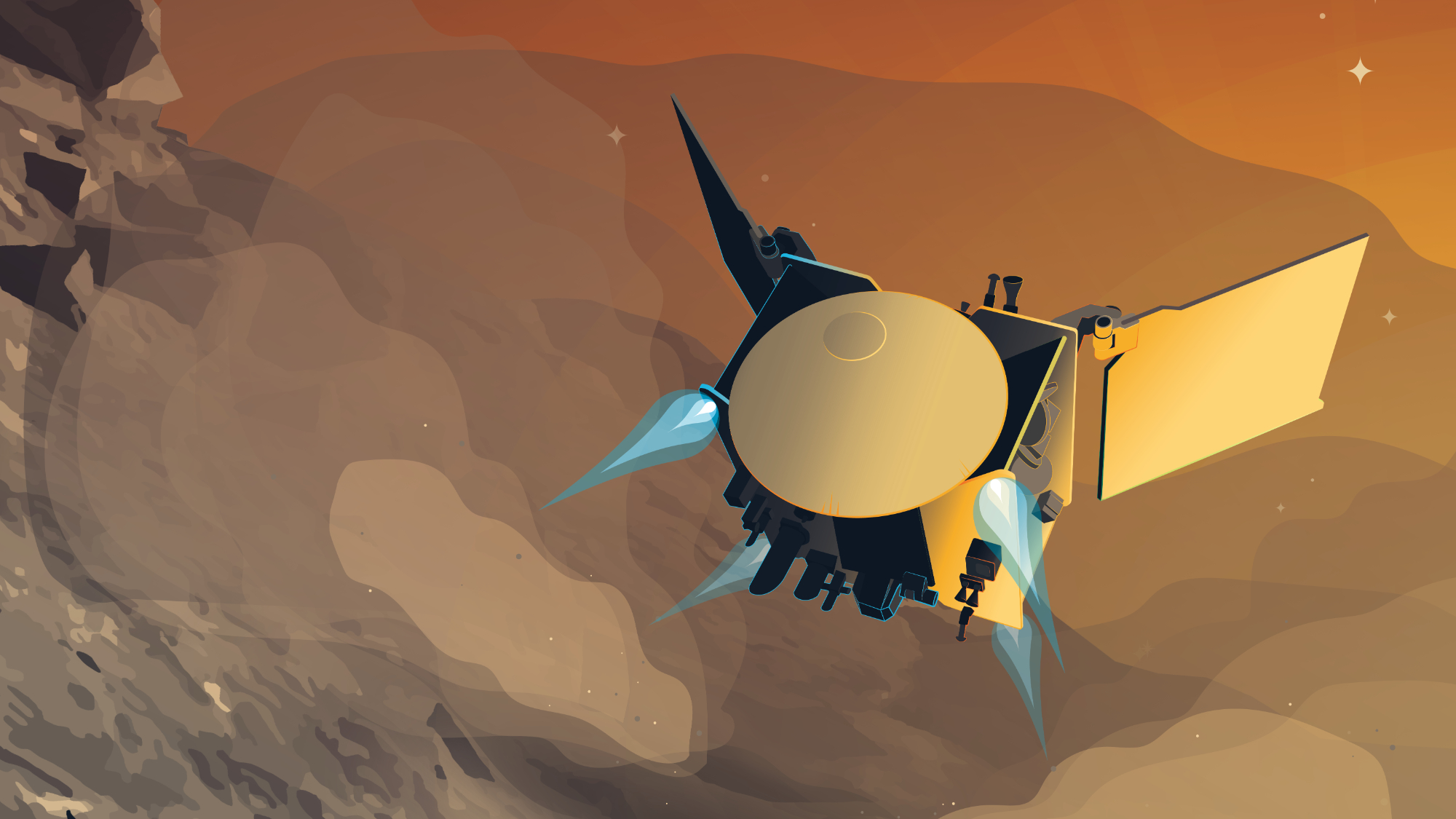After NASA's epic OSIRIS-REx capsule landing success, spacecraft heads to asteroid Apophis on new mission
This second asteroid quest will see the OSIRIS-APEX spacecraft (as it's now known) sidle up to an infamous near-Earth object.

The NASA probe that delivered precious samples of the space rock Bennu to Earth is now on an extended voyage to study an infamous near Earth asteroid.
OSIRIS-REx completed NASA's first asteroid sample return mission on Sunday (Sept. 24), when its reentry capsule landed in the western Utah desert. But now the main spacecraft has embarked on a side quest: to scope out and get up close with Apophis, an asteroid previously thought to potentially pose a threat to Earth.
The spacecraft used its return to Earth to fling itself on a course toward Apophis. It fired its engines about 20 minutes after releasing the reentry capsule containing pristine material from the early solar system, effecting a trajectory change and setting it on another long, looping voyage.
Related: Apophis: The infamous asteroid we thought might hit us
That complex journey will take OSIRIS-REx much closer to the sun than it was originally designed to get, passing within the orbit of Venus a number of times and revisiting Earth, eventually allowing it to finally rendezvous with Apophis. It is planned to reach the object, also known as asteroid 99942, on April 8, 2029.
OSIRIS-APEX will not collect samples from Apophis, but it will study the asteroid for 18 months. These proximity operations will include imaging and mapping the asteroid and a close-up rendezvous maneuver like the one used to obtain material from Bennu in October 2020. While we won't get to analyze parts of Apophis on Earth, this move will give unique insights into its subsurface, composition and properties.
Apophis is an intriguing and high-profile near Earth object (NEO). The roughly 1,100 feet (340 meters) object was once thought to have a chance of smashing into Earth in 2068. Apophis is no longer considered a threat, and the celestial dance of the solar system will instead offer a chance to get up close with this former nemesis.
Breaking space news, the latest updates on rocket launches, skywatching events and more!
Apophis' next close approach to Earth will see it get within around 20,000 miles (32,000 kilometers) of us on Friday, April 13, 2029. While an inauspicious date to some, it presents humanity with a great opportunity to study the space rock and learn more about not only asteroids but also the evolution of the solar system.
Apophis is a "typical" near-Earth asteroid, Olivier Hainaut, an astronomer working on NEOs at the European Southern Observatory (ESO), told Space.com.
"By studying it, we will learn more about these objects, most of which were formed at the same place as the Earth," Hainaut said. "In a way, you can look at Apophis and the NEOs as crumbs left over while making the Earth."
Bennu is a carbon-rich, B-type asteroid, but Apophis is an S-type, or "stony" asteroid composed mainly of silicate and nickel iron. These relics of that primordial era are common in the inner solar system and could yield untold secrets of the origins of the planets and the processes that led to their formation.
Because of its common properties, it will also be useful for planetary protection efforts. "It is super interesting scientifically and super-interesting for the protection of the Earth," Hainaut said. "While Apophis is not dangerous, we expect it to be very similar to other NEOs that could collide with the Earth."
But an asteroid may not be what it appears, as OSIRIS-REx found at Bennu: That space rock's surface behaved, surprisingly, like a ball pit. We won't know what Apophis is like until the probe gets up close and personal with it.
And OSIRIS-APEX may not be the only visit to Apophis, if scientists get their way.
NASA's Small Bodies Assessment Group recently called for the agency to find a way to fly by Apophis before its close encounter with Earth. This would "provide a complete investigation of this remarkable opportunity to quantify and understand in real time the consequences of planetary tides on the evolution of asteroids and glean important information on Apophis' interior structure, which is otherwise unobtainable," the group stated.
Elsewhere, a workshop is being organized for 2024 to explore international collaboration opportunities for both Earth-based observations and potential in situ investigations of Apophis.
Whether these extra missions happen or not, OSIRIS-APEX will provide more pieces of the puzzle, helping researchers understand the primordial objects in our neighborhood, our planet and how to protect it.

Andrew is a freelance space journalist with a focus on reporting on China's rapidly growing space sector. He began writing for Space.com in 2019 and writes for SpaceNews, IEEE Spectrum, National Geographic, Sky & Telescope, New Scientist and others. Andrew first caught the space bug when, as a youngster, he saw Voyager images of other worlds in our solar system for the first time. Away from space, Andrew enjoys trail running in the forests of Finland. You can follow him on Twitter @AJ_FI.
